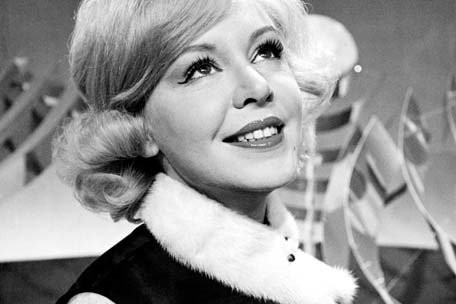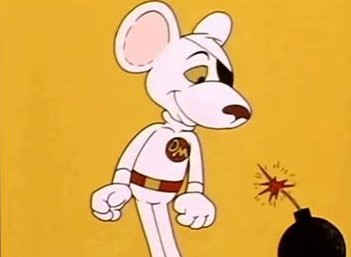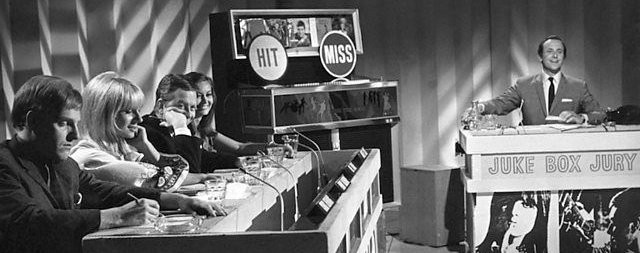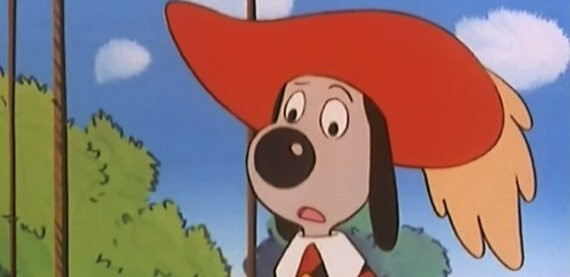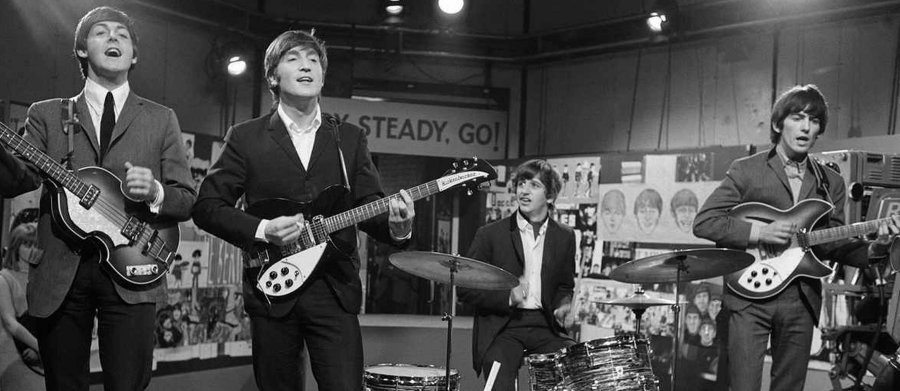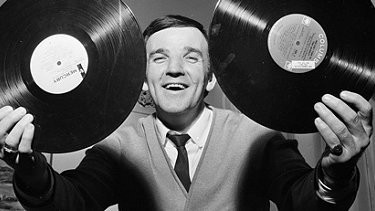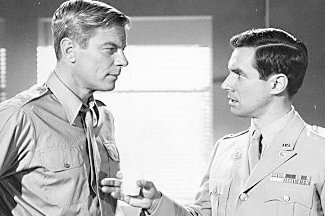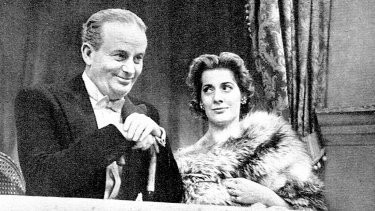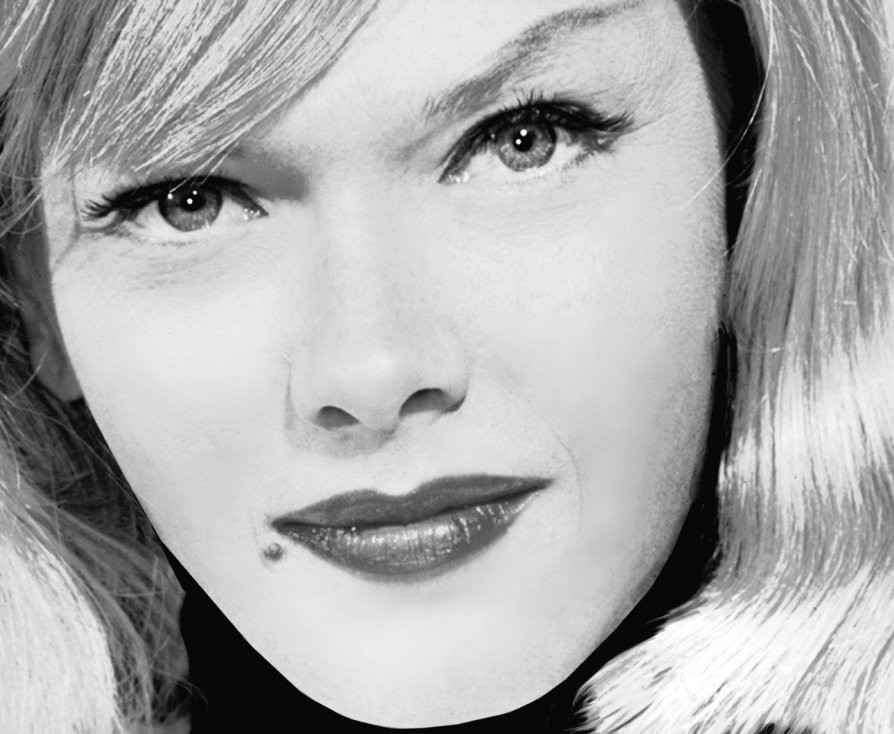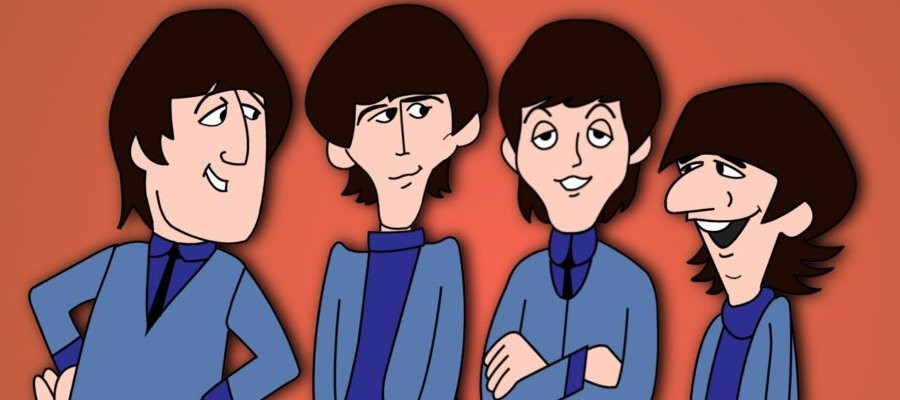
The Beatles (Cartoon Series)
1965 - United StatesAl Brodax was the head of the motion picture television department at King Features Syndicate in late 1963 when he secured the rights to produce a cartoon series based on The Beatles. Brodax had established himself within the company by coming up with the idea of producing 220 'new' Popeye cartoons. The investment for this was twenty five thousand dollars and in the first year Brodax, along with his associate, Mary Ellen Stewart, and production manager, Abe Goldman, was able to show a healthy return of three million dollars.
Brodax then commissioned a group of artists to come up with suitable caricatures of the Beatles, but was unhappy with the results. But by the time King Features went public with an announcement of the intended cartoon series (in November 1964) the Beatles were hot property in the USA. With only preliminary drawings and a basic outline of what he intended Brodax turned to A.C. Gilbert and Company for funding. Anson Isaacson, President of A.C. Gilbert, had recently turned the company's fortunes around following a 1963 financial loss of $5.6 million. Isaacson was able to use his influence to sell the Beatles cartoon series concept to ABC-TV and in doing so agreed to invest $1.5 million into the project.
Although Brodax now had financial backing for his project and a network on which to feature it he was fast running out of time. With six months to go before the series was due to premiere he still hadn't found a studio to produce the series, anyone to write the scripts, or any artistes to portray John, Paul, George and Ringo's voices.
In the end the job of producing the caricatures as well as the group's individual personalities for the cartoon series fell appropriately to an Englishman, Peter Sander. Dennis Marks, Jack Mendelsohn, Heywood Kling and Bruce Howard wrote the scripts but it was Al Brodax who came up with the format for the show. And it was a very simple format indeed. Each half-hour show consisted of two five-and-a-half minute episodes in which the Beatles would be placed in typical or untypical situations. The typical situations were the ones where they were chased by girls, the media or people trying to cash in on their success, and the untypical ones had them fleeing from ghosts, vampires or (in one story) a lovesick octopus -all of which were of course Beatle fans!
Each episode was loosely based around the lyrics of the Beatle song that featured in that particular adventure (this song also served as story title) and there were two sing-a-long segments where the words to a Beatle song appeared at the bottom of the screen. To give the series a truly international flavour the stories were set in different countries around the world, such as Japan, Ireland, India, Spain, etc. -and each location was featured at least twice (or in some cases up to four times) and often in the same weekly episode.
The stories had to be approved by Al Brodax who then had to get approval from ABC-TV before being given to the writers to produce a script -for which they were each paid four hundred dollars. After the scripts were written they were turned into storyboards based on Peter Sander's caricatures and character traits. John Lennon was shown as the leader of the group, chin up and always looking down his nose, his movements were described as 'jerky, almost aggressive' and he never sat anywhere -he slouched. Paul McCartney was the 'most poised and stylish' Beatle using his hands to express whatever he was saying. George Harrison nearly always gave the impression of frowning, was wry, loose limbed and angular whilst Ringo Starr was described as a Groucho Marx type of figure with clothes that always looked too big.
The man who was given the task of turning those scripts into storyboards was a former King Features employee, who had by that time turned freelance, Joe Cal Cagno. To solve the problem of producing so many episodes in such a short space of time, Al Brodax fell back on a tried and trusted method he had employed with his 'Popeye' series. The animation work was farmed out simultaneously to different studios around the world. As a result the animation work for The Beatles cartoon series was produced in studios in England, Australia, Canada and Holland. Not one single episode was actually produced in the USA.
To voice the four group members Brodax employed an American and an Englishman. The American, Paul Frees was an experienced voice artiste and had worked on a number of US produced cartoon series such as 'Rocky and Bullwinkle' (as Boris Badenov), 'George of the Jungle' and 'Secret Squirrel.' Frees voiced John Lennon and George Harrison. The Englishman was already familiar to the British public from the legendary TV satire show That Was The Week That Was -he was Lance Percival, and he voiced Paul McCartney and Ringo Starr. The voices did not go down well with either the British public or the Beatles themselves.
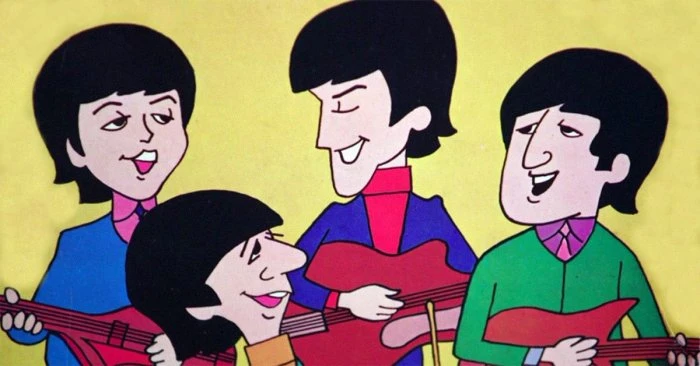
It was decided that the Beatles voices should be 'Americanised' -that is to say that the voices came over as what the Americans considered to be British accents. There was never any attempt to copy the Beatles true Liverpudlian accents as it was felt that this would be too difficult for the young American audience to understand. Ultimately the voices sounded like upper class plumb-in-the-mouth Londoners with Lennon in particular sounding like a poor impersonation of Rex Harrison. Brian Epstein, the Beatles manager, was so horrified of what the British public may have thought that he banned the series from being shown in the UK.
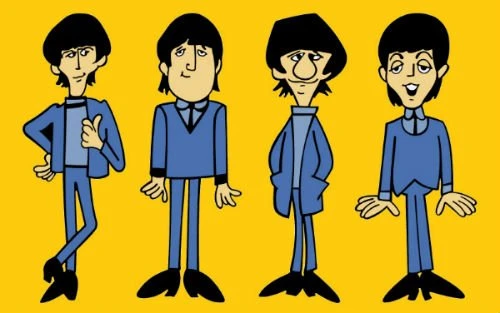
As it turned out, as far as America was concerned, Al Brodax's decision on the voices proved to be the right one. When 'The Beatles' cartoon series premiered on ABC's Saturday morning line-up at 10:30 am EST on September 25th 1965, it captured an unprecedented 52 per cent of the audience. The show proved to be extraordinarily profitable for ABC who was able to cash in on ever-increasing advertising rates as the first season, and the runaway success that was 'The Beatles' cartoon series continued. In the wake of this success there was also officially licensed Beatles cartoon merchandise to cash in on as well.
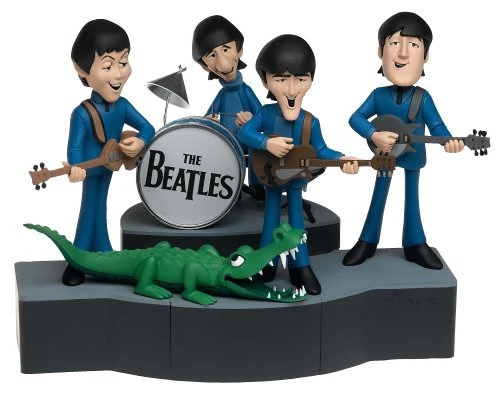
In the end there were 39 shows featuring 78 stories over three seasons. During that time the Beatles had the Midas touch. Almost everything they did -movies, concerts, recordings, TV and radio appearances broke new records on a seemingly daily basis. By the time the third series aired the Beatles were moving on to the next phase of their career. The touring had stopped and the group had moved into the recording studio in Abbey Road to begin work on their most celebrated album of all, Sgt Pepper's Lonely Hearts Club Band. They were no longer the 'loveable mop tops' even though the world, it seems, continued to love them. Also, as the four group members grew up so their audience grew up too. After all, cartoons are for kids, right? Ultimately, there were no more Beatles cartoons because the audience had quite simply outgrown the medium.
It's hard to imagine now, watching those crude cartoons with their repeated visual sequences and tally-ho voices, that in its day 'The Beatles' cartoon series was a revolution in cartoon entertainment which continued to influence Saturday morning television for years to come (as well as paving the way for a full length Beatles animated feature film, 'Yellow Submarine'). The series success inspired cartoon series of 'The Jackson Five' and 'The Osmonds', -and this years after the Beatles had even ceased to exist as a group. Perhaps even live action shows such as 'The Monkees' and 'The Partridge Family' may not have been made had it not been for Al Brodax's success.
'The Beatles' cartoon series did finally make it to British shores, shown as late night television in the late 1980s and they have appeared now and then on TV sets around the world. But in the early 1990s the series' rights were purchased by the Beatles own company Apple Corps. Ltd. Since then they have been kept firmly out of site. Perhaps we will eventually see them resurface on DVD. As John Lennon wrote, tomorrow never knows.
Seen this show? How do you rate it?
Seen this show? How do you rate it?
Published on November 29th, 2018. Written by Laurence Marcus (February 14 2004) for Television Heaven.


